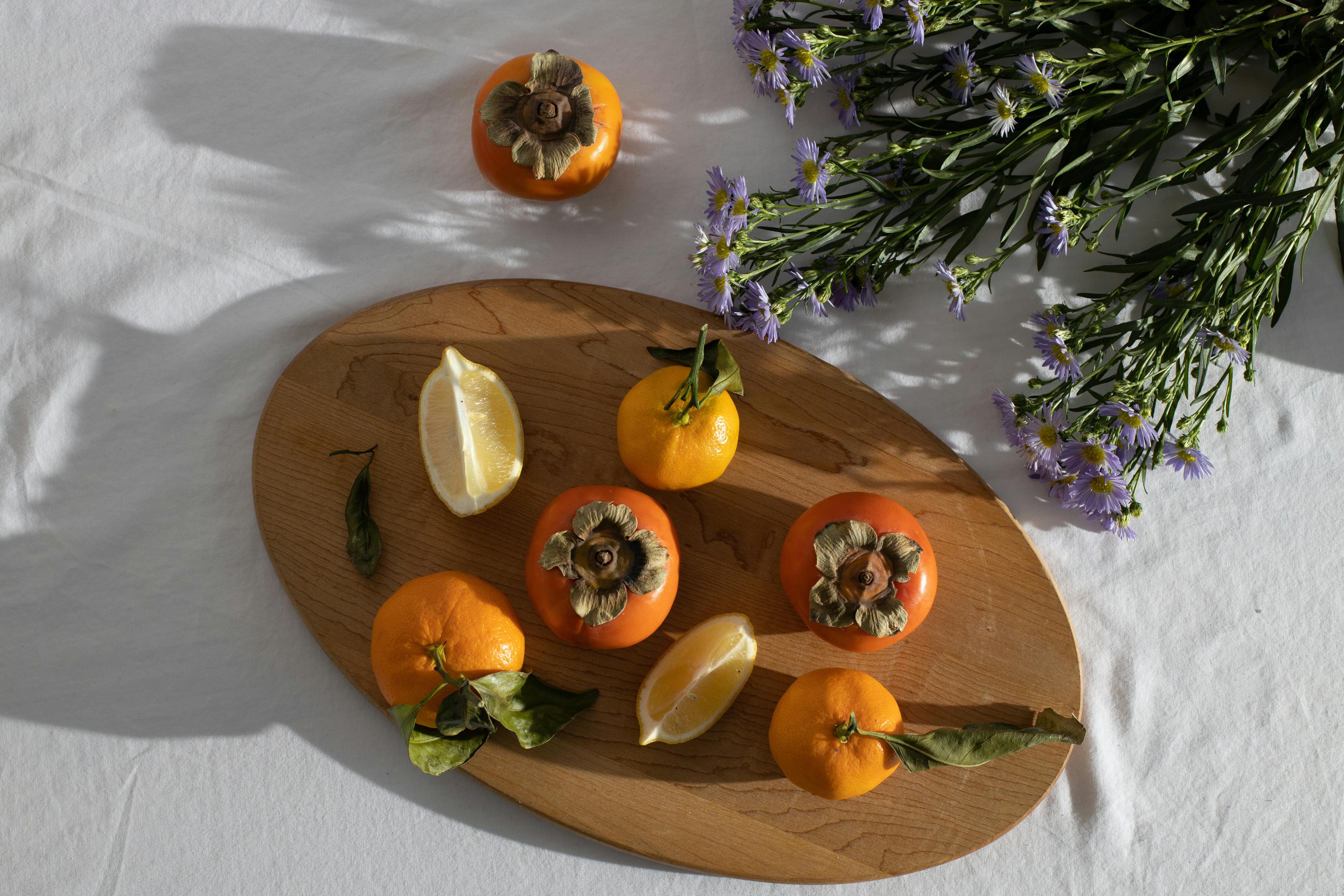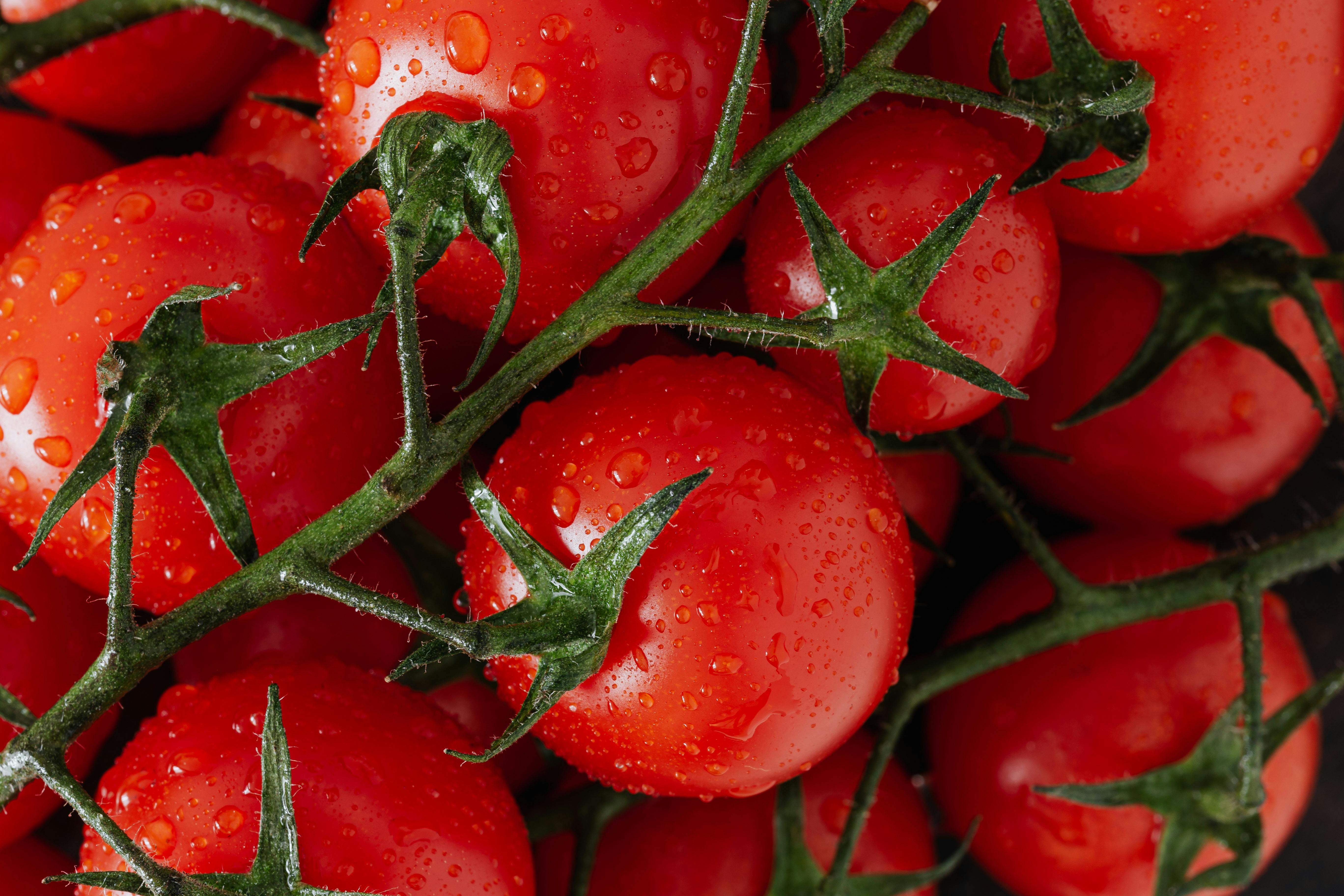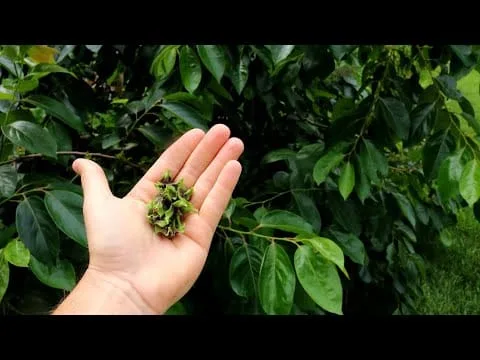Persimmon fruit drop is a common phenomenon that affects many persimmon trees. It occurs when the fruits of the tree ripen prematurely and fall from the tree before they reach maturity. This can be a major problem for farmers and gardeners as it leads to significant losses in yield. There are several factors that can cause persimmon fruit drop, including temperature, rainfall, pests, and diseases. Understanding these causes is important in order to successfully control this issue and ensure a healthy harvest.The most common cause of persimmon fruit dropping before it is ripe is environmental stress. This can include extreme temperatures, drought, insect damage, and nutrient deficiencies. Other reasons for fruit drop may be due to genetic predisposition or incorrect pollination.
Dropping of Persimmon Fruit Normal?
Dropping of persimmon fruit is a normal occurrence during the ripening process, although it can be difficult to determine what is actually natural and what is caused by stress or other environmental factors. In general, persimmons will naturally drop from the tree when they are ripe, although this process can be hastened by strong winds or other environmental conditions. If you find that your tree has dropped a large number of persimmons before they are fully ripe, it may be a sign that something else is going on.
The most common cause of premature fruit drop is stress, such as inadequate water or nutrient levels, too much sun exposure, or pest infestations. In these cases, the best course of action is to address the underlying cause of the stress and provide the tree with better care. This can help to ensure that your persimmon tree produces healthy fruit in future seasons.
Sometimes, persimmons may drop prematurely even when the tree appears to be healthy. This could be caused by a variety of factors including poor pollination or extreme weather conditions. In these cases, there is often nothing you can do except wait for future harvests and hope for better results.
In summary, dropping of persimmon fruit is normal during the ripening process but could also be an indication of an underlying problem with the tree’s environment or health. If you notice your trees dropping fruit before they are fully ripe, it may be worth investigating further to ensure that your persimmon trees produce healthy crops in future seasons.
How to Prevent Persimmon Fruits from Falling?
Persimmons are a popular fruit among many gardeners, but they can be difficult to grow. One of the most common issues is that the fruits tend to fall off the tree before they are fully ripe. This can be a frustrating problem, but there are several methods you can use to prevent it.
One of the best ways to avoid persimmon fruits from falling prematurely is to prune the tree properly. Proper pruning helps prevent overcrowding and allows for better air circulation, which will help keep persimmons on the tree longer. The branches should be pruned in such a way that they provide adequate space for all of the fruits and leaves.
Another way to keep persimmon fruits from falling is by using netting or trellising. This will help support the weight of the fruit as it grows, reducing the chance of it dropping prematurely. Netting should be placed around the tree at least one month before harvesting begins.
It’s also important to fertilize properly throughout the season in order to ensure that your persimmon tree has enough nutrients so that its fruits remain on longer and ripen properly. Fertilizing should begin in early spring and continue throughout summer until harvesting begins.
Finally, proper irrigation is essential for keeping your persimmon fruits on your tree for as long as possible. Make sure your tree is getting enough water, especially during hot summer months when temperatures are high and rainfall may not be sufficient. Watering should take place in early morning or late evening when temperatures are cooler and evaporation rates lower.
By following these tips you can successfully prevent your persimmons from falling prematurely and enjoy their sweet taste without any worries!
Is There a Way to Reduce the Number of Fallen Persimmons?
Fallen persimmons are a common problem for many homeowners. The fruit often falls from trees, leaving behind a mess and potential hazards. Fortunately, there are several methods which can help reduce the number of fallen persimmons and make it easier to enjoy the sweet fruit without having to worry about picking up the mess afterwards.
One of the most effective ways to reduce fallen persimmons is through pruning. Pruning helps remove dead or diseased branches, as well as those that may be low-hanging and prone to breaking off and dropping fruits. It’s important to note that pruning should be done carefully and judiciously – too much pruning can damage the tree, making it more susceptible to disease and pests.
Another method of reducing fallen fruits is through proper fertilization. Applying fertilizer in late winter or spring when persimmon trees are in bloom helps ensure that they get the right amount of nutrients for healthy growth and development. Over-fertilizing can cause more flowers than usual, resulting in more fruit production, so it’s important not to overdo it.
Finally, another way to reduce fallen persimmons is through harvesting them at the right time. If you wait until they ripen on the tree before harvesting them, you’ll have fewer fallen fruits overall because ripe fruits will stay attached longer than unripe ones. It also helps if you regularly check for pests such as scale insects which can weaken branches and cause them to break off prematurely with their load of unripe fruit.
By following these tips, you can help reduce the number of fallen persimmons on your property so you can enjoy them without having to worry about cleaning up after them!
Common Reasons Why Certain Fruits Drop
Fruits dropping from trees is a common occurrence in nature, and there are a variety of reasons why this can happen. One of the most common causes is due to natural fruit drop, which is when the tree reaches maturity and sheds excess fruits to ensure that its energy is spent on the more viable fruits. This can be seen in apples, pears, oranges and other types of fruit trees. Additionally, some fruits may drop prematurely due to environmental factors such as extreme heat or cold temperatures, strong winds, heavy rains or disease infestations. If the conditions are not ideal for optimal growth or health of the tree, it may result in premature fruit drop. In some cases, pests such as birds or insects can also cause premature fruit drop by feeding on the fruits before they reach maturity. Finally, improper harvesting techniques can also cause premature fruit drop if too much force is used when removing the fruits from the tree.
Overall, there are many possible causes for premature fruit drop from trees including natural fruit drop, environmental factors, pests and improper harvesting techniques. It’s important to take steps to protect your trees from these potential hazards in order to ensure optimal growth and productivity.

Abnormal Fruit Drop in Persimmons
Fruit drop is a common problem faced by persimmon growers. Abnormal fruit drop is when the fruit prematurely drops from the tree before it has had a chance to fully ripen and mature. There are several factors that can contribute to abnormal fruit drop in persimmons, including environmental conditions, pests and diseases, nutrient deficiencies, and improper pruning or irrigation practices.
Environmental Conditions
Extreme temperatures can cause persimmon trees to shed their fruit prematurely. Persimmons are sensitive to cold and high temperatures, so extreme temperatures during blooming or growth stages can cause the fruit to abort before it has a chance to mature. High winds can also cause premature shedding of fruits due to mechanical damage.
Pests and Diseases
Insects such as aphids and thrips can damage flowers resulting in poor pollination or abnormal fruit formation. Diseases such as powdery mildew, black rot, and scab can weaken the tree or reduce photosynthesis leading to undersized fruits that may be more prone to dropping off the tree prematurely.
Nutrient Deficiencies
Insufficient levels of essential nutrients such as nitrogen, phosphorus, potassium, magnesium, calcium, zinc and iron can all lead to poor health of the tree resulting in premature fruit shedding. Improper fertilization or soil deficiencies can also result in nutrient deficiency symptoms.
Improper Pruning or Irrigation Practices
Excessive pruning of branches or shoots may reduce photosynthesis leading to smaller sized fruits that may be more prone to dropping off prematurely due to their weight. Improper irrigation practices such as over-watering or under-watering may also lead to premature shedding of fruits due to water stress caused by too much or too little water respectively.
Is There a Way to Determine if a Persimmon is Ripe Before it Falls?
Many people love the sweet, juicy taste of ripe persimmons, but they can be tricky to harvest. As persimmons ripen, they become softer and sweeter, but if they are left on the tree too long, they can become overripe and fall off. Knowing when the fruit is at its peak for harvesting can be tricky. Fortunately, there are a few ways to determine if a persimmon is ripe before it falls.
One way to tell if a persimmon is ripe is to gently press your finger against the skin of the fruit. If you can make an indentation in the skin without breaking it or causing any damage, then the persimmon is likely ripe and ready for picking. The skin of a ripe persimmon will also feel slightly softer than that of an unripe fruit.
Another way to tell if a persimmon is ripe is by looking at its color. A ripe persimmon will be deep orange in color and may even have some brown spots on its skin. Unripe fruits will have more green in their coloring and may even have hints of yellow or white on their skins.
Finally, you can also try tasting a small piece of the fruit to determine if it’s ripe or not. If it has a sweet flavor that isn’t too intense, then it’s likely ready for picking. However, you should only taste-test after you’ve already checked for softness and color as these are more reliable indicators of ripeness than taste alone.
In conclusion, there are several ways to determine if a persimmon is ripe before it falls from the tree. Gently pressing against the skin of the fruit, looking at its color, and tasting it are all good methods for determining ripeness. As long as you use these methods carefully so as not to damage the fruit, you should be able to easily tell when your persimmons are ready for harvesting!
Does the Weather Affect the Number of Fallen Persimmons?
Persimmons are an incredibly popular fruit in many parts of the world and have been enjoyed for centuries. While persimmon trees are known for their hardy nature, it’s important to understand that the weather can have a significant impact on the number of fallen persimmons. There are several factors that can influence how many persimmons fall from a tree during any given season, including temperature, sunlight, and precipitation.
Temperature is one of the most important factors in determining how many persimmons will fall from a tree. If temperatures drop below freezing for extended periods of time, it can cause some fruits to fall prematurely. Additionally, prolonged periods of extreme heat can also cause some persimmons to drop from the tree before they are fully ripe.
Sunlight is another factor that can affect how many persimmons will fall from a tree. Trees that receive more sunlight tend to produce more fruit than those that get less sunlight. This means trees planted in shaded areas will generally have fewer fruits and less ripe ones than those planted in sunny areas.
Finally, precipitation levels can also impact how many persimmons will fall from a tree. Too little rainfall can cause some fruits to prematurely drop while too much rain can cause others to rot before they are picked. Additionally, heavy winds or hail storms can also cause some fruits to fall off before they are ready to be harvested.
In conclusion, there are several factors that influence how many persimmons will fall from a tree during any given season. Temperature, sunlight, and precipitation levels all play an important role in determining how much fruit will be produced by a persimmon tree each year. Understanding these factors can help ensure you get the best harvest possible from your trees each year.

Conclusion
Persimmon fruit dropping is a natural occurrence that can be caused by many factors. Some of these factors are weather, climate and soil conditions, as well as the maturity of the fruit. Poor pollination can also contribute to this issue. The best way to avoid fruit drop is to create a favorable environment that supports healthy growth and development of the plant and its fruits. Additionally, proper harvesting techniques can help reduce or prevent fruit drop.
Ultimately, persimmon fruit drop is a common issue that can be addressed through careful monitoring of the environmental conditions and proper harvesting techniques. With these steps in place, you can ensure that you get the most out of your persimmon tree and have a bountiful harvest for years to come.



